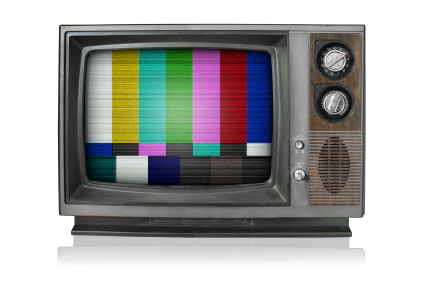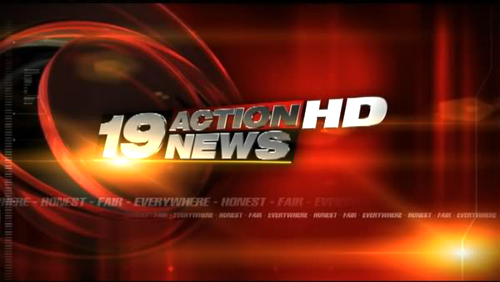I just ended a 14 year run in local television marketing and promotion that took me from Grand Rapids to Chicago back to Grand Rapids to Colorado Springs. My short description of the work: running an in-house agency to build brands, drive viewership, and increase our overall standing with all stakeholders. So, my side was the business-to-consumer marketing that results in business-to-business selling of audiences (basic content around advertising model).
I’ve greatly enjoyed the first decade and a half of my career. I’ve worked for some great companies and done excellent work with wonderful people.
Here are some thoughts and observations from my experience in the local media industry. They’re focused primarily on traditional television broadcasting, rather than multi-platform content distribution and marketing.
These thoughts and observations are simplified and bullet-pointed. I’m happy to elaborate upon or talk through any of this in more detail. Use the Connect with Ethan page to find me – or just leave a comment on this post.

What a TV looked like when my career began. (Image from Photobucket user alex54j )
Working in Local TV Marketing and Promotion is Fun
- It’s a nice combination of creativity and strategy.
- You get to work extensively with words and ideas.
- You get to create and manipulate images, both still and moving.
- You get to work with music, sound effects, and natural/ambient sound.
- Promos are always more exciting than the news packages – you get to pack all the best video and sound into :30!
The Work Itself is There, Then Gone
- This is a basic function of linear broadcasting.
- The display of your work is immediately fleeting and the work itself is highly perishable.
- You get plenty of immediate gratification; what you just made can be put on TV within minutes.
Marketing to Anonymous Masses Provides Limited Satisfaction
- The ability to track and measure, to connect directly efforts to results, is weak. Research budgets are limited. Nielsen’s measurements of viewing behavior are (insert adjective with negative connotation here).
- In short, it’s more art than science.
- Very few people like advertising. It’s an interruption of what they’ve come to see or experience.
- Nearly everyone wants and expects content and marketing to be increasingly personalized and customized (rightfully).
- Television broadcasting is linear and monolithic, not personalized or customized.
- It’s impossible to be consistently relevant, and therefore satisfying, to a mass of people.
- That’s because they’re not a monolith; they are individuals who happen to be consuming the same media at the same time.
- Tools like Facebook have taken phone call and email feedback to a new level that approaches direct relationships. Even those individuals, though, tend to be treated as a mass.
Local News is Very Static and Homogenous
- Every station has pretty much the same stories as one another and the same kinds of stories every night.
- Every newscast provides pretty much the same experience it did a decade ago … but shinier. It’s predictable.
- Locally, this is in part due to stations all watching each other.
- Nationally, this is in part due to all stations being consulted by the same handful of consultants.
- Overall, this is because “news” is defined rigidly by the journalistic institution.
- This is why ubiquitous, generic “area man” headlines from The Onion, America’s Finest News Source, work so well.
- This is why we all immediately recognize the visual and verbal patterns in the videos that close this post.
- The formula from which newscasts are made seems to work well enough that there’s no compelling reason to make anything more than minor tweaks and conservative decisions. Related: newspapers have only just found their savior and his ideas don’t seem especially radical.
Financially, Local TV Broadcasting is Challenged
- As with most businesses, costs are constantly increasing.
- This effect is mitigated slightly by technology and automation. The hubbing of core operations, for example, is a fundamental operating strategy for Lin Media (22 broadcast signals originating from just 2 master control centers; 100% of traffic operations run from just 1 location (see 2010 annual report, page 4).
- Revenue is flat/declining and dominated by TV revenue. Though it varies by station and company, I’d guess that 90-95% of revenue is still generated by television ad sales.
- Profit margins, naturally, are tighter than ever. A broadcast license was once a license to print money; stations enjoyed profit margins above 50%. Though it varies by station and company, I’d guess that they’re more in the 15-20% range in a good year.
- For a stronger future, some local news operations will have to be shut down (see above – Static and Homogenous). This is a natural result of competition.
- As fragmented as the media landscape is (that fragmentation fundamentally threatening the TV business), television is still the only place to find mass. This is why network prime time shows command higher ad rates, despite smaller audiences.
- Among the younger set, it’s cool to hate TV and its advertising. However, Apple loves it! Go figure.
- Television still enjoys an amazing windfall from political advertising.
Local Television Advertising’s Effective, But …
- Is it cost effective? By migrating dollars into other channels, the large-scale, sophisticated television advertisers say no.
- I just finished Joseph Jaffe’s Life after the 30 Second Spot, published in 2005. At the time, DVRs were the threat to effectiveness. Forms of digital capture and distribution have increased dramatically in the past 6 years.
- Digital pureplay companies offer relatively inexpensive marketing and advertising options … and they’re 100% trackable.
- With inexpensive tools to create and publish yourself, “every company is a media company.” There’s less need to pay for exposure.
- Some traditional TV advertisers have flipped the situation upside down, selling advertising themselves.
Local Television Stations Are Important
- Local television stations have incredibly strong brands. They’re local instituions.
- They inform, prepare, and connect people; they provide a sense of local identity and community.
- People take your calls when you tell them you’re calling from a local TV station.
- The role and responsibility of the best local news and weather teams will continue to be important, no matter how distribution changes. The challenge there is to stay relevant day-to-day, rather than simply being a go-to place in times of crisis.
- High definition television signals are free for the taking – and they’re the cleanest form of television signal.
In Summary
I’m grateful for all the opportunities this industry has presented me and the dozens of excellent humans who helped me along the way. I hope for the best for the individuals who make the industry.
As you might expect, I’ve got many more thoughts, feelings, and ideas. I’m happy to have a threaded comment conversation, a real conversation, or an email exchange about any of this.
My Local Television Employers
- Tribune Broadcasting: WXMI FOX 17 in Grand Rapids, Michigan
- Weigel Broadcasting: WCIU and WFBT in Chicago, Illinois | WMWB and WBND in South Bend, Indiana (WFBT is now WWME, WMWB and WBND were sold)
- Lin Media: WOOD TV8, WOTV 4, and WXSP in Grand Rapids, Michigan
- Cordillera Communications: KOAA 5 in Colorado Springs, Colorado
Related Posts at ethanbeute.com
Upside Down: Traditional Advertising Relationships
Good News: You Get to Decide What’s News!
Broadcast Television: In Praise of a Relic
Our Nation’s Common Medium: Why Just One?
Bonus Videos
Both employ coarse language. The first is more slowly paced. The second is more direct and more coarse. Both employ the immediately recognizable patterns to which I referred earlier in this post.
